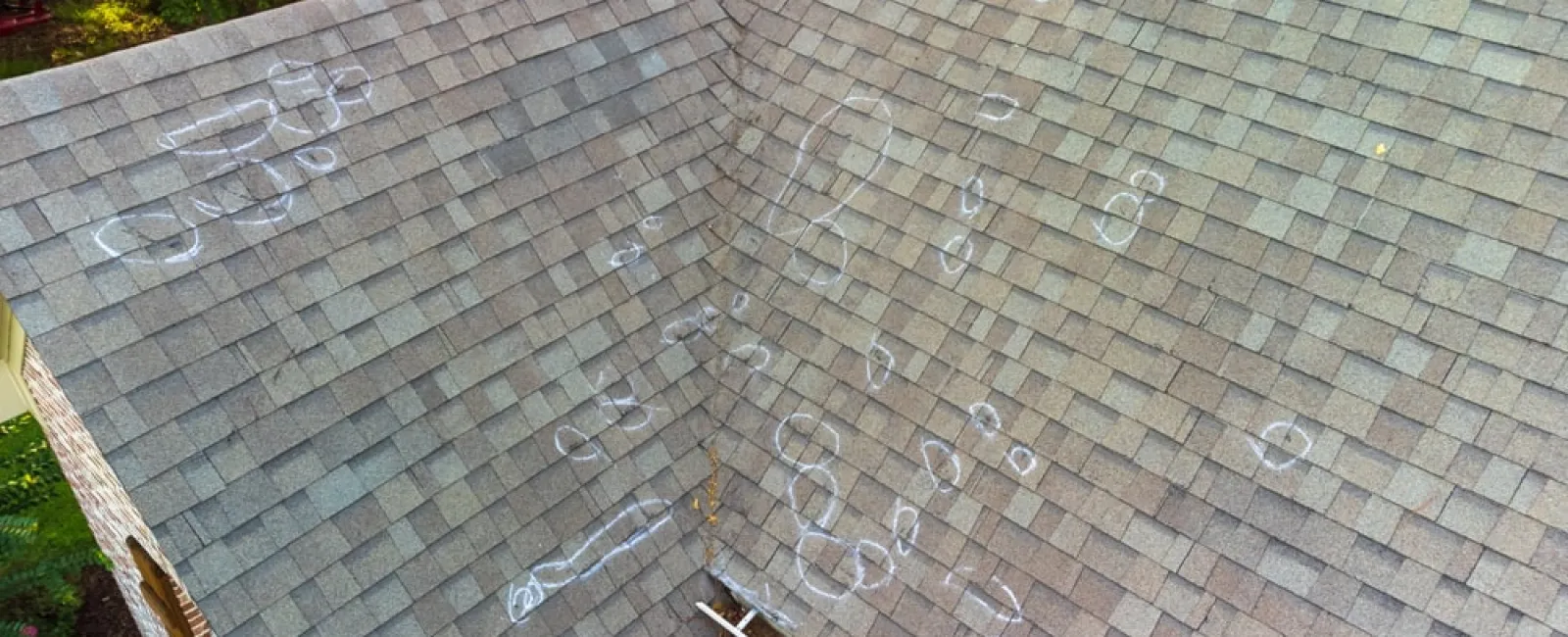Hail Damage on Roof
How are roofs damaged by hail? This is a frequent question homeowners have. After all, aren't roofs designed to withstand different weather conditions? How is it possible that something like little frozen pellets can wreak havoc on your roof?
Perhaps you just endured roof hail damage or you want to take proactive steps in preparation for the next storm season. Either way, these are all good questions. While you can't prevent hail damage from occurring, you can take the necessary steps to ensure the next hail damage roof repair is not as painful. Let's take a look at signs of hail damage on a roof.
How Does Hail Damage a Roof
Hail roof damage can sometimes appear to be minor, but the true damage can be more severe. So how does hail damage a roof? During a hail storm, the primary factors influencing the severity of the damage include wind, size, and density of the hail itself. There are also factors such as neighboring houses and barriers such as trees and other structures that can influence the amount of damage.
Hail size itself can vary. This can play a large role in the level of damage. Stones may have rough edges that can cause puncture damage to your roof. If your roof is older or is already damaged, it's even more susceptible to hail damage.
Generally, hail roof damage is easily identifiable. Here are some ways in which roofs can be damaged by hail:
Asphalt shingle damage
Hailstones can cause granule loss, exposing the underlying layer can potentially causing leaks. You may also notice darker spots or "bruising" from hail damage on roof shingles where the granules have been displaced.
Broken Tiles
Strong hail can crack or break ceramic or even concrete roof tiles.
Dented Metal Roof
Hail impacts can cause dents, punctures, or deformation of metal panels.
Roof Flashing Damage
Roof flashing metal joints preventing water infiltration may get dented or bent due to hailstorms, compromising the waterproofing of your roofing system.
Skylight and Vent Damage
Hail impacts can fissure skylights and even shatter them in extreme cases.
If you experience any of the above, contact a professional roofing contractor for the right hail damage repair and prevention. Northpoint Roofing offers free drone inspections to assess your home's roof hail damage.
Hail Damage Roof Inspection
It's crucial to get a thorough inspection from a roofing expert as soon as possible following a storm or you could be left with serious water damage. Here at Northpoint Roofing Systems, we ensure you identify underlying damage that may not catch the eye. We will work alongside you with your insurance company to ensure that you get the appropriate hail damage roof repair.
Some of the common signs of hail damage on a roof that we may find during your roof inspection:
- Splitting wood shingles
- Deteriorating roofing materials, such as holes in the protective cover
- Missing or loosened shingles
- Water damage causing leaks
- Lost shingle granules that cause accelerated roof aging
- Fracturing or exposure of the fiberglass matt beneath the roof
Make sure to give us a call after the storm so that we ensure that the integrity of your roof is in place.

